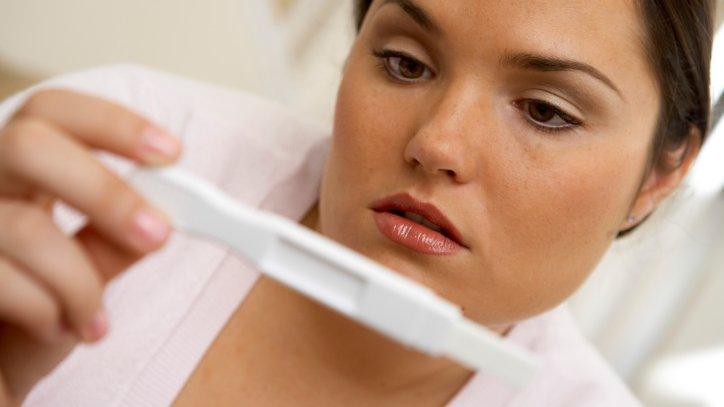How has IVF developed since the first 'test-tube baby'?
- Published
Louise Brown was the first person to be born after in-vitro fertilisation (IVF)
In July 1978 Louise Brown was hailed as the world's first "test-tube baby", born through the fertility treatment IVF. But how does her story compare with modern procedures?
"On the day I was born, my mum had to be taken to the operating theatre for her Caesarean section in pitch darkness, with just a torchlight showing the way," Louise Brown explains.
"Only a few staff knew who she was, and my parents didn't want others realising her identity and tipping off the newspapers."
Louise's birth was cloaked in secrecy. Even her father John's first visit to see her in Oldham General Hospital was under the eye of police officers, who lined the corridor outside.
The reason was that his daughter, from Bristol, had become the world's first "test-tube baby", as the press hailed her.
More accurately, she was the first to be born through in-vitro fertilisation (IVF), a process in which an egg is removed from the woman's ovaries and fertilised with sperm in a laboratory, before being implanted into the uterus.
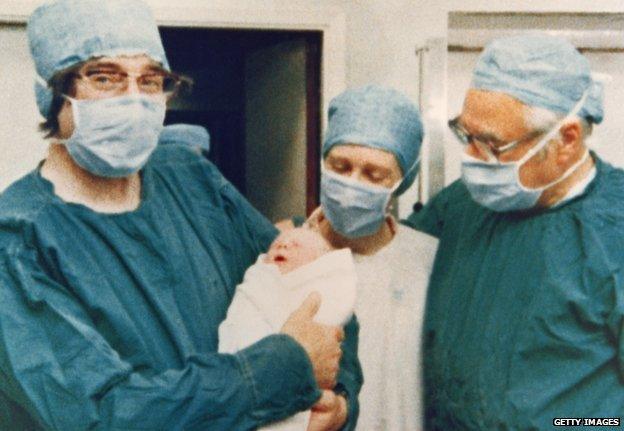
IVF pioneers Robert Edwards (L) and Patrick Steptoe (R) pose with Louise and the midwife following her birth
It is a treatment used to enable couples with a range of fertility problems to conceive a child, and now allows same-sex couples and single mothers to have children too.
Technological advancements mean - according to 2013 estimates - more than five million people worldwide have been born through this process.
But in 1978 it was highly experimental, and Dr Mike Macnamee, chief executive at the world's first IVF clinic - Bourn Hall in Cambridge - believes Louise "really was a miracle".
The two men who pioneered the treatment - gynaecologist Patrick Steptoe and Nobel Prize-winning physiologist Robert Edwards - "had gone through hundreds of embryo transfers before Louise was conceived", he adds.

Watch Victoria Derbyshire weekdays from 09:15-11:00 BST on BBC Two and BBC News Channel, for original stories, in-depth interviews and the issues at the heart of public debate.
Follow the programme on Facebook, external and Twitter, external, and find all our content online.

The pair had joined forces a full 10 years earlier, with skills that perfectly complemented one another - Edwards having developed a way to fertilise human eggs within the laboratory and Steptoe having devised a method for obtaining the eggs from the ovaries.
When Louise's mother Lesley was put in contact with Steptoe by her doctor, she was warned there was a "one in a million" chance of success.
So when it worked, it was such a momentous scientific advancement that the birth had to be filmed - under agreement with the government - to give documented evidence that Louise was indeed her mother's.
Even before her mother was able to hold her newborn, Louise had undergone around 60 different tests to ensure she was "normal".

Advancements in the 1980s mean eggs can now be frozen
This is a far cry from modern procedures, which - owing much to the work of Bourn Hall in the 1980s - follow a refined and well-established clinical process.
"Once they [Steptoe and Edwards] worked out how to fertilise the egg, they very soon wanted to restrict the number of embryos they transferred into women - so they didn't have too many multiple births," Dr Macnamee explains.
"Development of the freezing technique in the mid-80s meant they could implant one or two embryos [into the would-be mother] and then freeze other embryos for future use, saving her the uncomfortable procedure of having the eggs removed again."
Progress can also be seen in the modern use of ultrasound imaging to harvest the eggs under a mild sedation, rather than the form of keyhole surgery known as laparoscopy that was previously employed.
Techniques developed in the late 1980s also made a big difference in treating male infertility by injecting single sperm directly into the egg.
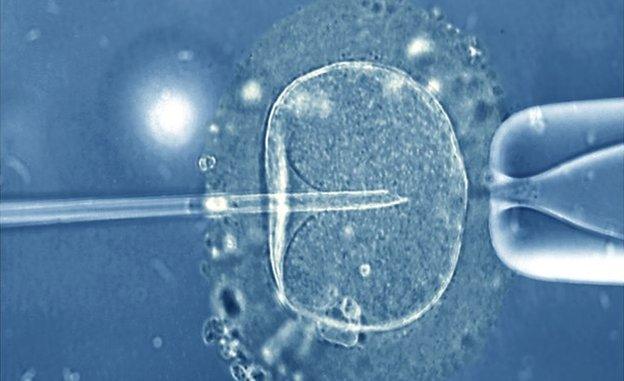
Eggs can be injected with a micro-needle containing a single sperm
These, and other, small incremental steps mean the success rate for each round of IVF has grown from 10% to 40% since the early 80s, when Dr Macnamee's first role included the hands-on task of mixing the eggs and sperm in a petri dish.
The chances of successfully conceiving through IVF decline with age, but the process is now more effective per cycle than natural reproduction. It does not, however, have approval from all quarters.
In November, Pope Francis said the process promoted children as "a right rather than a gift to welcome" and was "playing with life".
Yet in August 1978, Cardinal Albino Luciani - shortly to become Pope John Paul I - unexpectedly refused to criticise Louise's parents for using IVF, saying they had simply wanted to have a baby.
"It helped to counteract some of the negative things people were saying," Louise says.
"My mum got loads of letters from people. They were mostly positive, but there was some hate mail.
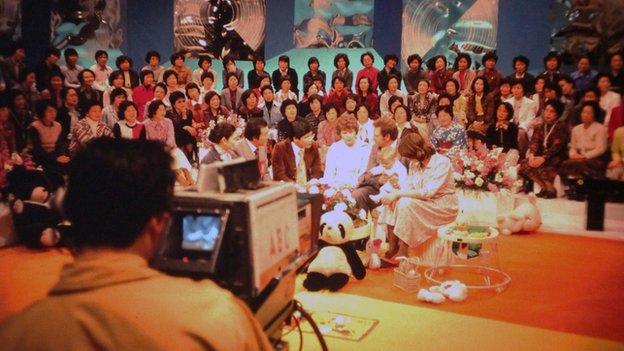
Louise's parents took her on a world tour following her birth, including to Japan
"They got an awful box from America which had a broken test-tube, fake blood and a pretend foetus inside. It came with a threat that the people who sent it were coming to see them."
Despite such isolated incidents, Louise - who conceived her two sons naturally - sees it as a privilege to have been the first person born through IVF.
"My mum and dad have had lots of people say that if it wasn't for them, they would never have been able to have children," she says.
Dr Macnamee thinks the chances of women conceiving through IVF will only increase in future - and says he hopes to see a 60% success rate in IVF cycles before he retires.
One prominent area of research is aimed at exploring the way in which embryos interact with the lining of the womb when they are implanted.
Many believe it is when the two fail to engage with each other that the IVF cycle can prove unsuccessful.
Progress is slow - as there is no model to undertake tests in the lab - but Dr Macnamee believes this line of research could be key.
"If we understand that better, it'd be the next big breakthrough," he says.
Louise Brown is the author of My Life as the World's First Test-Tube Baby.
- Published25 July 2013
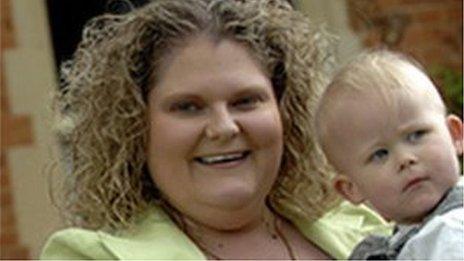
- Published25 March 2015

- Published25 October 2013
